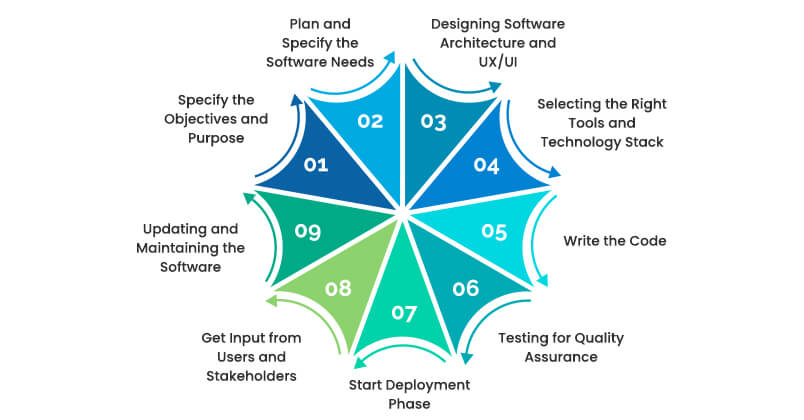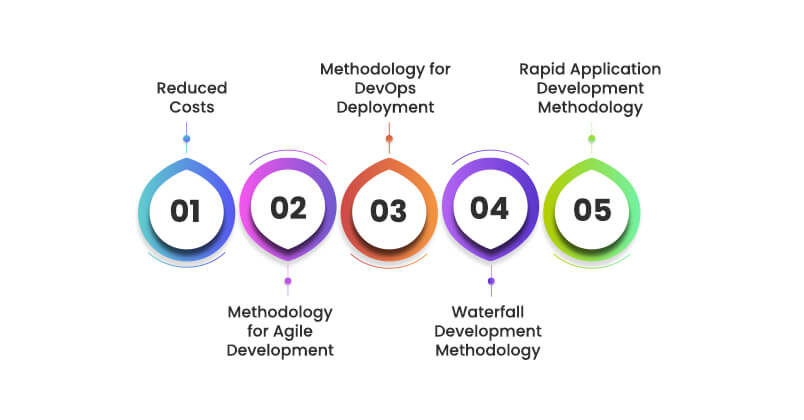-
solutinos
-
Hire
Frontend Developer
Backend Developer
-
NodeJS Developer
-
Java Developer
-
Django Developer
-
Spring Boot Developer
-
Python Developer
-
Golang Developer
-
Ruby on Rails Developer
-
Laravel Developer
-
.NET Developer
Technology
-
Flutter Developer
-
React Native Developer
-
Xamarin Developer
-
Kotlin Developer
-
Cross-Platform Developer
-
Swift Developer
-
MongoDB Developer
-
C Developer
-
Smart Contract Developers
Cloud
-
-
Services
Mobile Development
Web Development
- Work
-
Multi Services App
-
Food Delivery App
-
Grocery Delivery App
-
Taxi Cab Booking App
-
Multi Services App
-
OTT Platform APP
-
Social Media APP
-
Freelance Service App
-
Car Rental App
-
Medicine Delivery App
-
Liquor Delivery App
-
Sports Betting App
-
Online Coupon App
-
eLearning App
-
Logistics & Transportation App
-
Courier Delivery App
-
On-Demand Real Estate App
-
E-Wallet APP
-
Online Dating App
-
Handyman Services App
-
-
Process
-
Company

Quick Summary : The whole process of software development may appear difficult to some, especially those who are expecting their first software projects. This guide breaks down the whole software development process into 9 qualitative steps to ensure maximum output, high-performance software, and interruption-free deployment. The steps also include post-deployment updates and improvement phases.
Want to create user-friendly, high-performance, glitch-free, and industry-specific software applications? Know the easy step-by-step process of building functional software applications for high-quality software output.
Modern enterprises need to build industry-specific and custom software applications for the automation of workflows, providing services to customers, and also for departmental use. Some applications also need integrations of advanced technologies such as AI, ML, blockchain, etc. The core of contemporary technology is software, but how can one create a reliable, practical application? Software is essential to any business's success, so it is crucial to design it efficiently and effectively. You can ensure that your software development process is productive, and successful, and develops high-quality software. Follow the recent trends and best practices of software development.
This article aims to provide a step-by-step process of software development, a process that is broken down into easy phases.
9 Key Steps for Flawless Software Development

Let's examine a thorough, methodical process for developing software that fulfills user requirements and effectively accomplishes project objectives. The key 9 steps to developing software for professional use cases are:
Specify the Objectives and Purpose
The first step to software development is to understand the industry. For instance, if you want to develop software for the Manufacturing Industry–you need to know their target audience or end users. Next, you need to know the purpose. For instance, the software is for handling production, inventory, workforce, etc.
Setting goals and objectives in software development guarantees a clear direction. Software development begins with a thorough collection of the project's needs and objectives. This process involves conducting market and user research, analyzing competitors, determining your target market, and determining the features of the program you wish to incorporate into your software.
To increase understanding, use goal-setting strategies and purpose statements. Analysts collect information on the software's end users and purpose. The results of a thorough analysis of this data's feasibility are documented in a comprehensive requirements specification document. A well-written document ensures that all stakeholders have a clear idea of the project scope and reduces the likelihood of misunderstandings in later stages.
Plan and Specify the Software Needs
Describe the software requirements to the development team. The team working on the development will then specify the project strategy, data and process flow, and software modules to be used. Also, compute ROI to perform a cost-benefit analysis.
Make a document called a software requirements specification (SRS). The SRS serves as a blueprint that directs the entire software development process. Additionally, create a strategy plan that details the important dates, required resources, implementation procedures, and anticipated budget. Plan the features, modules, add-ons, integrations, server needs, network needs, etc.
Designing Software Architecture and UX/UI
Selecting the best software architecture is the most important step in the software development process. Layered, monolithic, event-driven, microservices, service-oriented, microkernel, and other architectures are among the options available.
This step focuses on creating the user interface and user experience. To improve user interaction, this phase focuses on developing an aesthetically pleasing and user-friendly interface. To make sure that users have a seamless and interesting experience, the designers work on improving the design, visual components, and user flows. In addition to being effective, the program should be simple to use, as this is essential for user satisfaction and retention.
Understanding your target audience's mindset, defining the system's response to various actions, deciding on a user-friendly look, creating wireframes to illustrate the fundamental structure and functionalities, combining wireframes into UX prototypes, and turning preliminary models into full-graphic interfaces are all necessary to ensure that you create the best UI/UX design.

Trust X-Byte's expertise in building high-quality enterprise software applications!
Get Quote Now! Get Quote Now!Selecting the Right Tools and Technology Stack
The best software development tools that you use will determine the achievement of your project because they directly affect the scalability, quality, and pace of development. While Flutter or Swift might be more useful for mobile applications, tools such as React or Angular might be required for web development. Version control requires collaboration tools like GitLab or GitHub.
The various languages for programming, platforms as well frameworks, tools, and additional resources that developers utilize to meet their software creation and product development requirements make up a technology stack. The technology stack differs from one project to another based on the needs and degree of complexity. There are three different kinds of tech stacks:
Technology Stack for Front-End
A variety of technologies can be used to manage front-end development. For instance, the front-end stack of a web application typically consists of HTML, CSS, and JavaScript. But other frameworks, such as AngularJS and ReactJS, have also surfaced.
Technology Stack for Back-End
The database and business logic for software are located in the back end. The back-end is built using a variety of technologies, such as Node.js, PHP, Ruby on Rails, and Python. Numerous frameworks, including Django, Laravel, Express.js, and others, can also be utilized.
Full-Stack Technology Stack
A shared technological stack can be used instead of creating front-end and back-end separately. This is known as full-stack development. Many technology stacks, such as MEAN and MERN, have arisen recently.
Write the Code
The most important step is coding, which begins once you have chosen the tech stack and software architecture. Employing developers having years of knowledge and experience is necessary to produce successful software. They will assist you with creating and deploying automation environments as well as building server-side, client-side, and API code.
The specifications and design of your product will be transformed into a functional software product by a skilled development team. This means writing the code and setting up the program to the predetermined design guidelines. Code is written, compiled, and improved by developers to create the functionality of the product.
Unit testing is carried out concurrently to find and fix problems before the development process, improving the software's quality. To keep on track, it's crucial to conduct regular progress assessments.
Testing for Quality Assurance
Unit, performance, regression, and integration testing are examples of automated test scripts and test cases that project managers and developers must write while writing the software's source code. These tests help in finding and resolving faults and bugs so that the program functions as intended. It is crucial to make sure the software satisfies quality standards & is error-free. Before going live, it aids in confirming the software's performance and usefulness.
A well-thought-out, comprehensive testing plan will increase the productivity and caliber of your QA team's work. By beginning product testing early in the development process, you can identify problems and defects before they become expensive repairs. To save time and ensure that your product functions properly across all platforms and devices use tools like Selenium to automate testing.
Start Deployment Phase
After the software has passed every test, the deployment step starts. To make sure that any last flaws are found, the program is released within a controlled environment during this phase, which may involve beta testing. Considering user input, business requirements, market trends, etc. when planning enhancements and new features.
When moving software from a test phase to a production environment, this phase is essential. Web applications can be hosted on platforms like AWS, Google Cloud, and Microsoft Azure that provide scalability and robust support. Consider distribution through channels like the Windows Store for desktop products or straight downloads from your website.
Every single platform has a unique set of requirements, such as package forms, security protocols, and approval processes. Before deploying the software, extensively test it in the desired environment to ensure a faultless user experience.
Get Input from Users and Stakeholders
When building software, client and end-user review cycles are essential. Teams may enhance the user experience, improve the product, and boost market viability with the use of real-world feedback.
Nest versions of your product depend on regular and thorough feedback loops. Having a feedback cycle in place can help you better understand your users and adjust your product to meet their needs.
Obtaining feedback from users and stakeholders helps ensure that the software meets practical requirements. Improve usability and reduce the need for expensive updates. Build a product that meets expectations and completes the project.
Updating and Maintaining the Software
The software goes through a maintenance period after deployment. Users receive regular assistance, and updates are released frequently to address issues, enhance functionality, and accommodate evolving needs or technological advancements. The continuous process of maintenance guarantees that the software will continue to be effective and pertinent to user requirements over time.
To keep your software product competitive, make sure you stay abreast of new developments in your sector. To ensure that the deployed program keeps acting as intended, the team must keep an eye on it. By eliminating some of the manual efforts, monitoring and alerting systems enable the team to keep an eye out for mistakes and determine whether users are successfully utilizing new features.
Team members who develop software can ensure effective project completion & client satisfaction by following these steps to produce high-quality software that satisfies the demands and preferences of the clients and end users.
Want custom software development for your industry-specific applications?
Leading Software Development Methodologies

A framework for creating information systems with an emphasis on structure and planning is called software development methodology, it is essential to the development of software systems. By increasing productivity and flexibility in response to changes, it helps teams and clients.
Many methods of software development have been introduced in recent years. Among the various approaches to software development, the top four of them are:
Reduced Costs
Logistics software also cuts overall operational costs through efficiency enhancement in some key areas like route planning and inventory. For small enterprises this can translate into major cost savings and these savings can be funneled to other areas. With logistics software integration, businesses can wield resources in a way that will help create a cost structure that fits their goals and objectives.
Methodology for Agile Development
Using brief sprints and regular feedback to develop software changes, the agile methodology places a high priority on user satisfaction and communication.
Use: Agile software development works well for projects whose requirements change over time, particularly in novel software development domains. Assuming developers are autonomous and need speed, it allows them to incorporate fresh concepts depending on market demands.
Methodology for DevOps Deployment
To foster cooperation and increase software development efficiency, DevOps integrates development and operations teams.
Use: This approach is most effective when working with large production & IT teams to swiftly automate tests and deliver entire processes.
Waterfall Development Methodology
Because of its simplicity, the waterfall approach is a sequential strategy that is still utilized in some projects today. It is rigid for projects with shifting requirements since each step must be finished before going on.
Use: Waterfall is best suited for projects that have a well-defined scope; it is not suitable for projects involving a lot of unknowns. For projects having predictable results and skilled developers, the waterfall method is seen to work best.
Rapid Application Development Methodology
Speed and quality are given top priority in the Rapid Application Development (RAD) approach, which was first presented in 1991. It includes requirements definition, prototype development, testing, and implementation. To lower product risk, RAD focuses on developing and testing prototypes over several iterations.
Use: For projects to be successful, Rapid Application Development, or RAD, depends on a talented group of developers and involved clients. Development can be accelerated by investing in RAD technologies, and effective communication is crucial.
Final Words
Software development is a tedious process that calls for thorough planning, effective implementation, and ongoing improvement. You can efficiently manage your software development project by following the above-mentioned steps, which will guarantee that the finished product satisfies user requirements and corporate objectives.
You can produce successful customized software by engaging skilled developers like X-Byte Enterprise Solutions and comprehending the main steps of the software development process. Their years of experience and a broad variety of mobile and web development services enable firms to maximize business operations and leverage the power of cutting-edge technology without interfering with current installations.
Do you want to create software specifically tailored to your company's requirements?
Contact X-Byte to serve as your strategic partner for completing outstanding software development!
Frequently Asked Questions
-
How much does software development cost?
Building software can cost anywhere from $50,000 and $250,000 on average, and specialized software development might cost much more. Software features, complexity, and other needs all can affect the price.
-
How much time does software development
take?
A software development procedure typically takes 4-5 months. Customized software projects take 4–11 months from conception to test and release, with the size and degree of complexity of the work being the main determinants of its overall duration.
-
What are the main challenges in the process of software
development?
Some of the main challenges in the process of software development include requirements changes, time restrictions, system integrations, compatibility issues, selection of the right tech stacks, quality assurance, and integrating new technologies while maintaining end-to-end security.
-
What makes user feedback crucial to software development?
Engineers can make well-informed decisions on their development and testing approach by integrating user feedback, which provides them with information about real-world usage scenarios. Products that use software can be improved and optimized to provide a better experience by solving user concerns and obstacles, which can be directly understood through user input.
-
Which technology is best for software development?
While there is no one answer for the above, different software development projects will require different tech and integrations of advanced technologies like Blockchain, AI, IoT, ML, etc. The software's safety, security, and maintainability should all be taken into account while choosing the best technology for software development.
